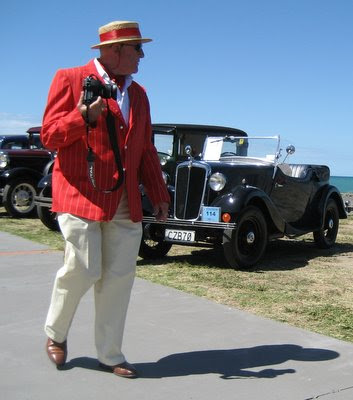When asked what his study of biology had taught him J B S Haldane (who said "The universe is not only queerer than we suppose, but is queerer than we can suppose.") replied that he'd learnt of God's 'inordinate fondness for beetles'. Indeed there are more beetle species on Earth than all the world's plants put together.
Like, I suspect, the majority of people I had never shared the love my Brother and his daughter, Helen, have for nature's insects. Their enthusiasm has, however, rubbed off on me over the years and for quite a while I have been photographing bugs and things. I'm not even afraid of hornets and wasps whilst I'm trying to photograph them - only when I don't have a camera to protect me do I become a nervous wreck in their presence!
When I came to New Zealand a whole new world of insects opened up in front of me. Not that we don't have millions in the UK but at the Cottage they appeared every night and day and persuaded me to photograph them. I have already posted an entry about the Wood Wasp but one of my first beetle encounters was with a Huhu Beetle or, in Maori, a Tunga Rere which is New Zealand's largest and heaviest beetle with a body length of about 4cm and antennae of up to 12cm.
Beetles can range in size from a fraction of a millimetre to more than 20 cm in length. The heaviest beetle is the African Goliath Beetle which can weigh up to 100grams - enough for it to crash through a glass window. The bodies of most beetles are very strong and well armoured. Some can carry 1700 times their own weight - the equivalent of three people carrying a 747 jumbo jet.
Beetles make up about 40% of all insect species making it the largest order of insects in the world. About 370,000 are known world wide: over 5500 in New Zealand with 90% of these unique to this country. Most are found only in native forest so their survival depends on the protection of this unique habitat.
Traditionally beetles were grouped by Maori into broad behavioural categories, a few tribal names for which are still in use. Mumu (or mumutawa or tanguru) includes the rounded beetles like scarabs, ladybirds and leaf beetles which often fly in swarms and often with a humming sound. Papapa or papaka are the broad, flat scuttling beetles (like tiger beetles) and other scurrying beetle-like creatures such as slaters and cockroaches - the name means 'flat' or 'lying close to the ground'. Tataka traditionally refers to beetles (and some moths) which fly around clumsily at night (eg longhorn beetles like the 'huhu').
I bought a wonderful book by Andrew Crowe when I came to New Zealand called Which New Zealand Insect. The categories are logically arranged and well set out and it has over 650 life size photos. I've found it invaluable. I was therefore rather surprised when I photographed a tiny (4mm long) insect yesterday which I took to be a beetle of some kind and of which I could find no parallel in the book. I could not, therefore, be sure of an identification. What I always do in these circumstances is seek CJ's help. However sometimes asking someone about an insect which may be a native to a country on the other side of the globe stretches knowledge a bit too far. So the jury is still out on Number 3.
 Huhu
Huhu Beetle -
Tunga Rere (
Prionoplus reticularis)

Burnt Pine Longhorn (Arthopalus tristis - was Ferrus)

A distinctive and tiny 4mm long insect - name awaited
 Every morning around 0600 the bird scarers to protect the grapes start banging. They are some sort of automated and random explosive charge. A farmer told me that they are one of the methods (and an expensive one) used to protect the grapes. For people who live near them it must be quite unpleasant. Anyway I discovered what the curious object in the posting for Friday 22 February entitled Curious Object is a quieter bird scarer.
Every morning around 0600 the bird scarers to protect the grapes start banging. They are some sort of automated and random explosive charge. A farmer told me that they are one of the methods (and an expensive one) used to protect the grapes. For people who live near them it must be quite unpleasant. Anyway I discovered what the curious object in the posting for Friday 22 February entitled Curious Object is a quieter bird scarer.

























.JPG)



























